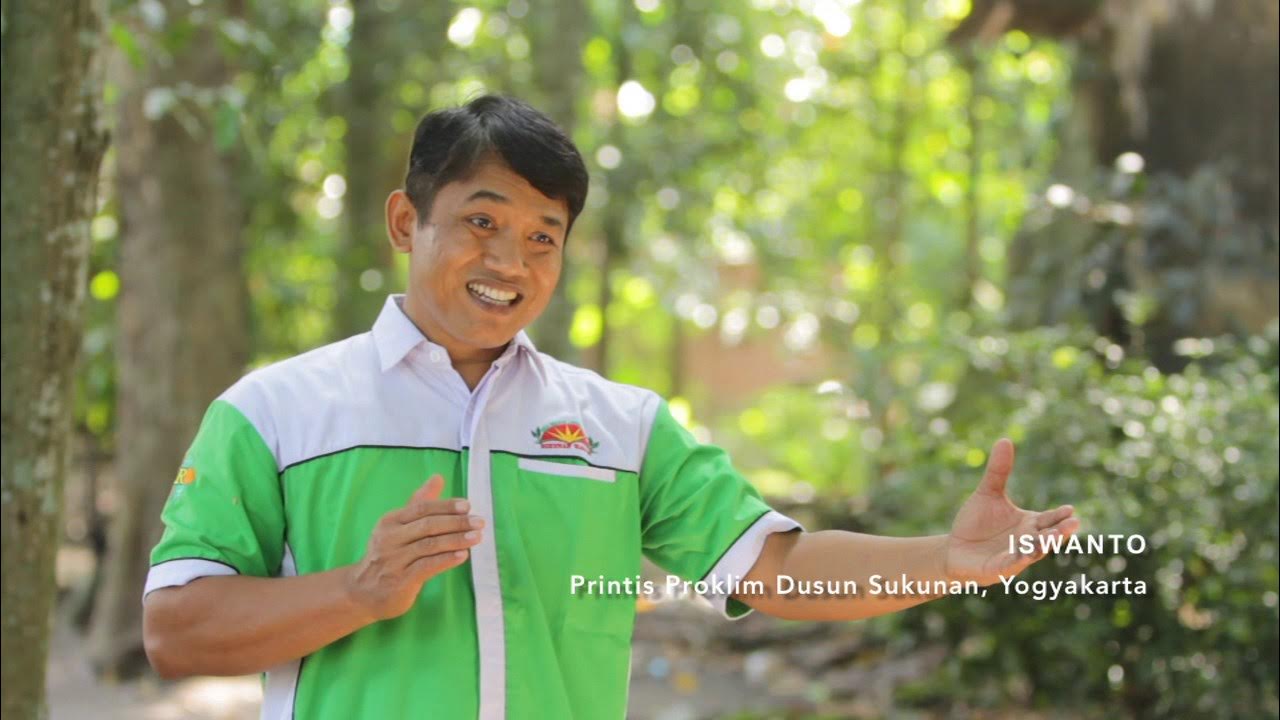Kreatifitas tak terbatas para penduduk desa | JELAJAH
Summary
TLDRThe video highlights the creative efforts of residents in a remote village, led by Sutisna, to harness natural resources for electricity generation. Using a homemade waterwheel powered by a nearby river, Sutisna provides energy for his household and the community. His innovation paved the way for the construction of a micro-hydro power plant that benefits the entire village. With international funding, the village now generates and sells electricity to PLN, contributing to local development through a cooperative. The project underscores the enduring value of water in both traditional and modern settings.
Takeaways
- 💡 The challenging situation encouraged villagers to think creatively and utilize abundant natural resources.
- 🏞️ Sutisna was inspired by stories from people in the neighboring city to connect water with something long-awaited by the residents: electricity.
- ⚙️ Using a simple mechanism, Sutisna created a water wheel system to generate electricity by damming the river beside his home.
- 🔋 The water wheel system provided sufficient energy to light his home, run small appliances, and offer modern comforts.
- 🏡 The village, located at an elevation of 500 meters, had not yet been connected to the national electricity grid (PLN).
- 🌊 In a larger scheme, Sutisna's water wheel concept evolved into a micro-hydro power plant (PLTMH) for the entire village, generating income for the community.
- 🌍 In 2008, Cinta Mekar Village received international funding to harness river flow for electricity generation, with the micro-hydro plant producing up to 120 KW.
- 💰 The electricity generated was sold to PLN, and the profits were distributed back to the villagers through a cooperative.
- 🌾 The river not only provided electricity but also irrigated 70 hectares of rice fields.
- 🤝 The cooperative managed the profits from electricity sales, using them for community benefits like scholarships and social welfare.
Q & A
What motivated Sutisna to develop a waterwheel system?
-Sutisna was inspired by the stories from people in nearby towns and the local need for electricity. His understanding of the relationship between water and electricity drove him to develop a waterwheel system to generate power for his community.
How does Sutisna's waterwheel system generate electricity?
-Sutisna built a simple waterwheel by damming the flow of a nearby river to ensure a stable water current. The flow of water spins the wheel, which then powers a dynamo to generate electricity.
What benefits did Sutisna's waterwheel system bring to his household?
-The waterwheel system provided enough energy to light up Sutisna's house and power small appliances like lights, a television, and even a device to burn chicken for cooking.
What challenges did the waterwheel system face?
-One challenge was the reduction in water flow during the dry season, which decreased the electricity output. However, the situation improved when rains resumed.
How did the local community benefit from the larger hydroelectric project in 2008?
-In 2008, the village of Cinta Mekar received international funding to develop a micro-hydroelectric power plant, which generated income for the village by selling excess electricity to PLN (the national electric company) and irrigated 70 hectares of farmland.
How much power could the micro-hydroelectric power plant produce?
-With a river flow rate of around 1,500 liters per second, the plant could generate up to 120 kW of power, providing electricity for the village and additional income.
What is the role of the village cooperative in managing the hydroelectric project?
-The village cooperative manages the funds generated by the sale of electricity. The proceeds are redistributed to the community in various forms, including scholarships and electric meters (KWH meters) for households.
What are the main uses of the income generated from selling electricity to PLN?
-The income is used for community development, such as providing scholarships, improving local infrastructure, and distributing KWH meters to households.
How does this project compare to larger-scale dam projects like Jatiluhur?
-While the village's micro-hydro project is small in scale, it demonstrates that water can still play a crucial role in modern advancements, similar to large-scale dams like Jatiluhur, which supply electricity across Java and Bali.
What message does the video convey about the importance of water in modern society?
-The video highlights that water is an essential resource that remains valuable in modern society, providing energy and supporting livelihoods, even as many people take its benefits for granted.
Outlines

このセクションは有料ユーザー限定です。 アクセスするには、アップグレードをお願いします。
今すぐアップグレードMindmap

このセクションは有料ユーザー限定です。 アクセスするには、アップグレードをお願いします。
今すぐアップグレードKeywords

このセクションは有料ユーザー限定です。 アクセスするには、アップグレードをお願いします。
今すぐアップグレードHighlights

このセクションは有料ユーザー限定です。 アクセスするには、アップグレードをお願いします。
今すぐアップグレードTranscripts

このセクションは有料ユーザー限定です。 アクセスするには、アップグレードをお願いします。
今すぐアップグレード関連動画をさらに表示

VIDEO PROFIL DESA BANCAK

The Journey of Govt School Students - Overcoming Off-Road Struggles and Study Without Electricity

KAMI YANG TERASING DI UJUNG NEGERI | INDONESIAKU (07/09/20)

SUKUNAN kampung iklim tipe perkotaan di yogyakarat

Wae Rebo, Desa di Atas Awan Berumur Ribuan Tahun

BELASAN KELUARGA HIDUP DI DESA TERPENCIL YANG TIDAK ADA LISTRIK
5.0 / 5 (0 votes)
